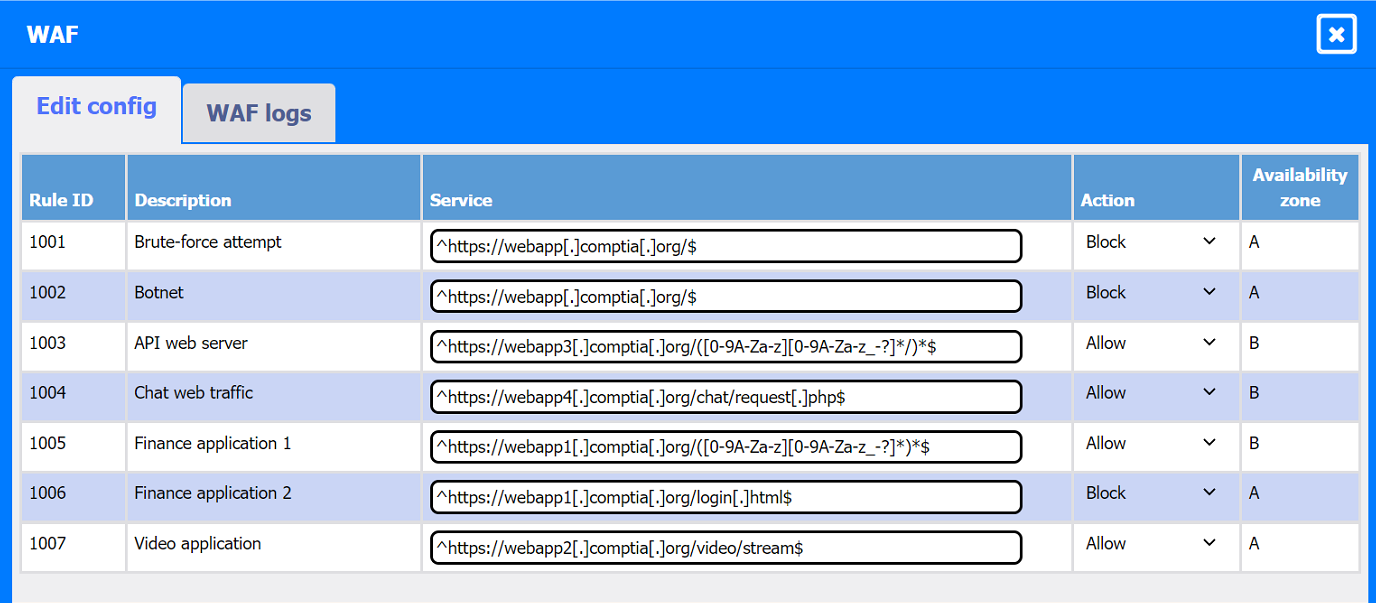CompTIA Exam CV0-004 Topic 1 Question 2 Discussion
Topic #: 1
A company hosts various containerized applications for business uses. A client reports that one of its routine business applications fails to load the web-based login prompt hosted in the company cloud.

INSTRUCTIONS
Click on each device and resource. Review the configurations, logs, and characteristics of each node in the architecture to diagnose the issue. Then, make the necessary changes to the WAF configuration to remediate the issue.
Web app 1

Web app 2

Web app 3

Web app 4

Client app




The issue is with Web app 1 (Finance application).
From the WAF logs, we can see that requests to https://webapp1.comptia.org/FIN/login.html are being blocked (Rule ID 1006). The rule is configured to block access to the finance application's login page. This corresponds to the reported issue of the web-based login prompt not loading.
To remediate the issue, the WAF configuration for Rule ID 1006 should be changed from 'Block' to 'Allow'. This will enable the web-based login prompt to load for the client.
Additionally, the client app configuration indicates that the client laptop (IP 192.168.10.142) is trying to access the service, and the WAF logs show that requests from this IP are being blocked due to the current rule set. Changing the action for Rule ID 1006 will also ensure that legitimate attempts to access the login page from this IP are not blocked.
Steps for remediation:
Go to the WAF configuration.
Find Rule ID 1006 for the Finance application 1.
Change the action from 'Block' to 'Allow'.
Save the changes.
Web application firewall (WAF) configurations typically include rules that define which traffic should be allowed or blocked. Blocking legitimate traffic to login pages can prevent users from accessing the application, which seems to be the case here.
Client application configurations and WAF logs provide valuable insights into the source of the traffic and the rules that are affecting it. It's important to ensure that the rules align with the intended access policies for the application.
Oretha
7 months agoTatum
7 months agoJamal
7 months agoNorah
7 months agoMadelyn
7 months agoBarrett
7 months agoMelodie
7 months agoNieves
8 months agoFelicitas
9 months agoBarrett
9 months agoEleonore
9 months agoBrittni
10 months agoLyndia
10 months agoSue
9 months agoFernanda
9 months agoLaurel
9 months agoPenney
9 months agoJeniffer
9 months agoEura
10 months ago